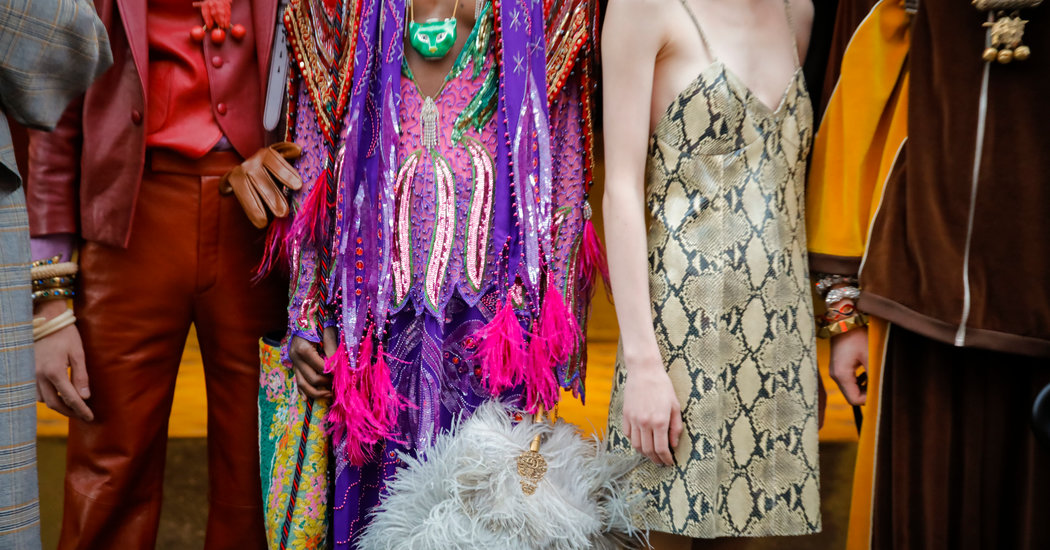
The race to be the most sustainable fashion brand is on.
When Gabriela Hearst presented her spring 2020 collection at New York Fashion Week, she described it as an “industry first.” The designer celebrated for her cashmere knits was not referring to her latest looks.
Instead, Ms. Hearst said she had produced the first fully carbon-neutral runway show, at a time when scrutiny of the environmental footprint of fashion week has reached fresh heights.
Forty-eight hours later, as the traveling fashion caravan rolled into London, Gucci, the luxury powerhouse, announced that it too is taking greater responsibility for the toll its business takes on the planet.
In a telephone interview, Marco Bizzarri, the chief executive of Gucci, confirmed that Gucci will stage a carbon-neutral runway show during Milan Fashion Week later this month.
“We will offset everything, from the travel emissions of 1,000 guests and 900 workers, including models, production staff and Gucci employees, to using recycled wood for the set and Forest Stewardship Council-certified paper invites,” Mr. Bizzarri said.
Gucci will be the first fashion label to earn ISO 20121 certification for its show, he said, referring to a standard of sustainable event management from the International Organization for Standardization. Already, the company, which has held its shows at its Milan headquarters for several seasons, has been monitoring its water and electricity consumption and waste, which have then been offset by Kering, its French parent group.
The more significant announcement, Mr. Bizzarri said, is that Gucci will make its entire supply chain fully carbon neutral before the end of September. The company will offset all greenhouse gases produced by third-party raw-material suppliers and manufacturers that produce for the Gucci brand, as well as its own direct operations.
Becoming carbon neutral does not mean that a company stops producing harmful emissions. Carbon offsetting means financially compensating for the emissions a business produces by canceling out greenhouse gas emissions somewhere else in the world. The money paid to buy offsets supports programs designed to reduce emissions. There is no fixed price on carbon, meaning the cost of an offset varies.
Currently, more than 90 percent of all Gucci emissions come from its supply chain and raw materials sources, a company statement said.
Its new initiative has been possible because of data collected from more than 1,000 suppliers across five continents for the company’s annual Environmental Profit and Loss statement, which aims to improve analysis of the company’s environmental footprint and study where it can become more efficient.
From Mr. Bizzarri’s perspective, the company is heading in the right direction, even as he tackles the question of how the appetite for Gucci products and ever-increasing levels of production to meet demand — the company reported eight billion euros in sales in 2018 — can be reconciled with a greener way of doing business.
“Look, the only way we can have zero emissions is to shut our business,” he said. “At the end of the day our company makes things, and we employ thousands of people with families and communities to do that. We need to think up the best ways of supporting our employees to do their jobs in the most sustainable way possible.”
In 2015, the company started an initiative to reduce its greenhouse gas emissions by 50 percent by 2025. As of 2018, it had reduced those emissions by 16 percent, or 35 percent of Gucci’s current environmental footprint. It will contribute money equally across four REDD+ initiatives in countries like Peru and Indonesia. (REDD+ is an acronym for Reducing Emissions From Deforestation and Degradation, a United Nations program designed to protect forests.)
“We know it’s not perfect, but we cannot afford to be complacent,” Mr. Bizzarri said. “We cannot wait for technological innovation alone to improve the climate crisis.”
Scrutiny of the fashion industry’s impact on the global climate crisis has hit new heights in recent months, driven by consumer pressure to tackle its carbon footprint, and has prompted many brands to publish updated sustainability commitments.
Mr. Bizzarri, who was a signatory of the Fashion Pact unveiled at the Group of 7 summit last month, said he believed Gucci is the first luxury brand to try to offset all of its emissions.







